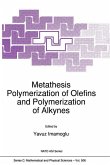During the last two decades, the production of polymers and plastics has been increasing rapidly. In spite of developing new polymers and polymeric materials, only 40~60 are used commercially on a large scale. It has been estimated that half of the annual production of polymers is employed outdoors. The photochemical instability of most polymers limits their outdoor application as they are photodegraded quickly over periods from months to a few years. To the despair of technologists and consumers alike, photodegradation and environmental ageing of polymers occur much faster than can be expected from knowledge collected in laboratories. In order to improve polymer photostability there has been a very big effort during the last 30 years to understand the mechanisms involved in photodegradation and environmental ageing. This book represents the author's attempt, based on his 25 years' experience in research on photodegradation and photo stabilization, to collect and generalize a number of available data on the photodegradation of polymers. The space limitation and the tremendous number of publications in the past two decades have made a detailed presentation of all important results and data difficult. The author apologizes to those whose work has not been quoted or widely presented in this book. Because many published results are very often contradictory, it has been difficult to present a fully critical review of collected knowledge, without antagonizing authors. For that reason, all available theories, mechanisms and different suggestions have been presented together, and only practice can evaluate which of them are valid.
Hinweis: Dieser Artikel kann nur an eine deutsche Lieferadresse ausgeliefert werden.
Hinweis: Dieser Artikel kann nur an eine deutsche Lieferadresse ausgeliefert werden.
As a reference work and a wide window to the scientific literature, Rabek's magnum opus should be very useful indeed...I recommend that everyone interested in polymer degradation ensure that he/she has easy access to this book and at least scans through it initially; more detailed reading is sure to follow. Polymer News








